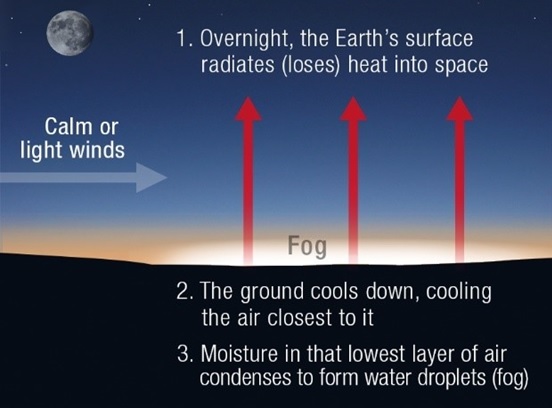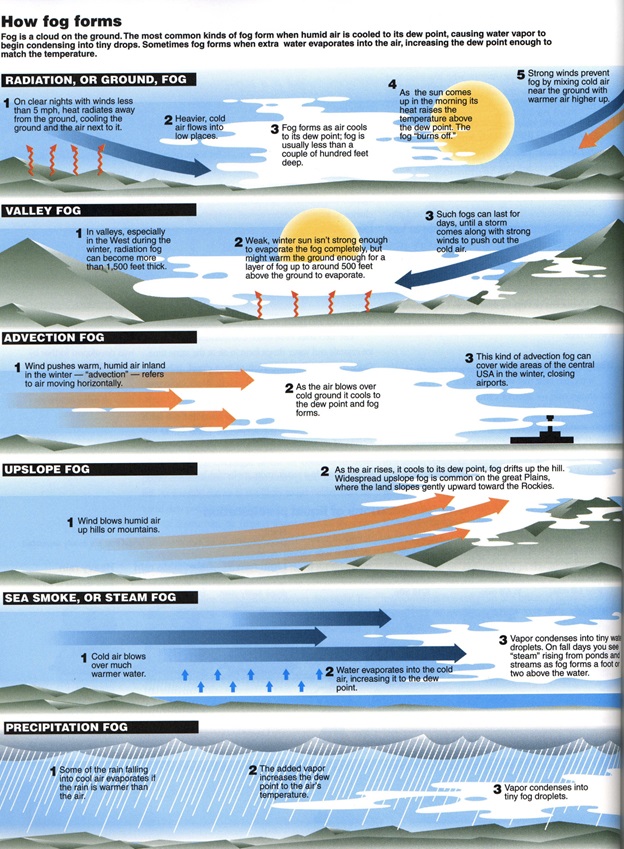900 319 0030
enquiry@shankarias.in
Dense fog covered the better part of north India during the last days of December and the 1st couple of days of 2024.
What is fog?

|
|
Fog |
Mist |
|
|
A thick low lying cloud at surface level and composed of tiny dew drops in the air. |
A cloud formed out of small droplets held over in atmosphere at ground level due to temperature inversion of humidity variation. |
|
Density |
Very high |
Relatively low |
|
Visibility |
Lower, upto 1 km |
Relatively higher, more than 1 km |
|
Longevity |
Longer period |
Shorter time |
Valley fog is so dense that sometimes it is called as tule fog.

References